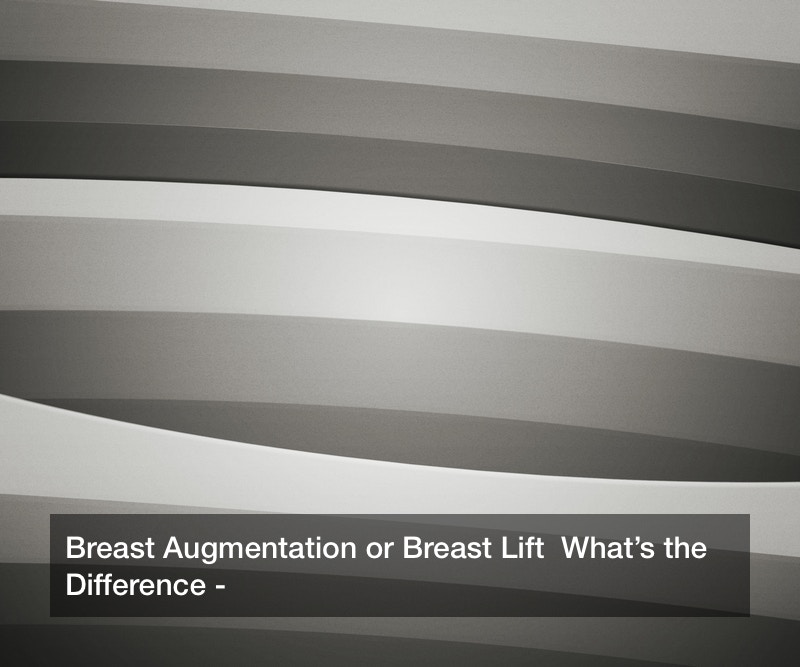Breast Augmentation or Breast Lift What’s the Difference?

In 2018, the American Society of Plastic Surgeons reported over 17.7 million cosmetic procedures had been performed; one of the most common procedures included in that statistic were mammoplasties, or breast-related restorative aesthetic treatments. Typically, restorative aesthetic treatments such as breast augmentations or lifts take place to improve the aesthetic quality of a woman’s breasts, be it through reconstructive or corrective efforts, and to increase the self-confidence of the woman undergoing the procedure. Unlike the common image many people conjure up of silicone or saline implants, however, there are actually several different types of mammoplasty procedures, with each one serving a different function.
As mentioned above, the most common procedure we think of when talking about mammoplasty is breast implants, or breast augmentation, as it is formally known. This procedure involves the insertion of implants beneath the tissue of the breast to increase the size or to reconstruct the breast. It should be noted that breast augmentations do not resolve the issue of sagging breasts and are relatively safe, with only 1-2% of those who choose saline implants experiencing a rupture of the implant. With this procedure, there are several aspects a woman should consider in consultation with her doctor, including the size and shape of the implant, the implant material, and what technique should be used for the augmentation procedure.
For those looking to improve the look of sagging breasts, a breast lift might be a better option than breast implants. By tightening the tissue and removing excess skin, this procedure can reinvigorate the youthful appearance of the breasts without increasing the size. In recent years, the American Society of Plastic Surgeons has noted an almost two-to-one increase in breast lift procedures over breast implants, in part because the procedure lacks the risks associated with breast implants. For women simply looking to better the appearance of aging or sagging breasts rather than increase the size or reconstruct the shape of their breasts, a breast lift is more likely to be the right restorative aesthetic treatment.
One final procedure to consider when discussing mammoplasty is breast reduction. As the name implies, a breast reduction procedure decreases the size of the breast through the removal of excess fat and tissue. While perhaps not as common as the previous two procedures discussed in this article, over 90,000 reduction procedures are performed every year. This procedure can be an excellent option to consider for women who suffer from complications caused by large breasts such as back pain or rashes, as well as those who feel uncomfortable with the appearance of large breasts.
Though this article is meant to give a brief overview of the major types of mammoplasty, the best person to discuss any restorative aesthetic treatments with is a cosmetic surgeon. A surgeon can help you decide which treatment is best for you based on the look you want and reason for the treatment, among other factors.
